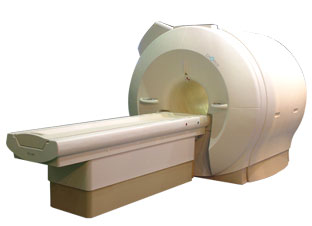 | Info
Sheets |
| | | | | | | | | | | | | | | | | | | | | | | | |
 | Out-
side |
| | | | |
|
| | | | | |  | Searchterm 'Gradient Echo' was also found in the following services: | | | | |
|  |  |
| |
|
| | | |  | | | |  Further Reading: Further Reading: | News & More:
|
|
| |
|  | |  |  |  |
| |
|
| |  | |
• View the DATABASE results for 'Balanced Turbo Field Echo' (3).
| | | | |
|  | |  |  |  |
| |
|
Quick Overview Please note that there are different common names for this artifact.
DESCRIPTION
Black contours at boundaries

Image Guidance
| |  | |
• View the DATABASE results for 'Black Boundary Artifact' (4).
| | | | |  Further Reading: Further Reading: | Basics:
|
|
| |
|  |  | Searchterm 'Gradient Echo' was also found in the following services: | | | | |
|  |  |
| |
|
Breath hold imaging in MRI is a technique with one ore more stoppage of breathing during the sequence and require therefore a short scan time. Breath hold techniques are used with fast gradient echo sequences in thoracic or abdominal regions with much respiratory movement.
Breath hold cine MRI techniques are used in cardiovascular imaging and provide detailed views of the beating heart in different cardiac axes.
Breath hold imaging requires the full cooperation of the patient, caused by usual MRI scan times from 15 to 20 sec.. In some cases breath holding can be practiced outside the MRI scanner to improve patient cooperation with the examination. Shorter scan times e.g. by parallel imaging techniques, or the administration of oxygen can help the patient to hold the breath during the scan. See also Abdominal Imaging. | | | |  | |
• View the DATABASE results for 'Breath Hold Imaging' (7).
| | | | |  Further Reading: Further Reading: | News & More:
|
|
| |
|  | |  |  |  |
| |
|

'Next generation MRI system 1.5T CHORUS developed by ISOL Technology is optimized for both clinical diagnostic imaging and for research development.
CHORUS offers the complete range of feature oriented advanced imaging techniques- for both clinical routine and research. The compact short bore magnet, the patient friendly design and the gradient technology make the innovation to new degree of perfection in magnetic resonance.'
Device Information and Specification
CLINICAL APPLICATION
Whole body
Spin Echo, Gradient Echo, Fast Spin Echo,
Inversion Recovery ( STIR, Fluid Attenuated Inversion Recovery), FLASH, FISP, PSIF, Turbo Flash ( MPRAGE ),TOF MR Angiography, Standard echo planar imaging package (SE-EPI, GE-EPI), Optional:
Advanced P.A. Imaging Package (up to 4 ch.), Advanced echo planar imaging package,
Single Shot and Diffusion Weighted EPI, IR/FLAIR EPI
STRENGTH
20 mT/m (Upto 27 mT/m)
| |  | |
• View the DATABASE results for 'CHORUS 1.5T™' (2).
| | | | |
|  | |  |  |
|  | |
|  | | |
|
| |
 | Look
Ups |
| |